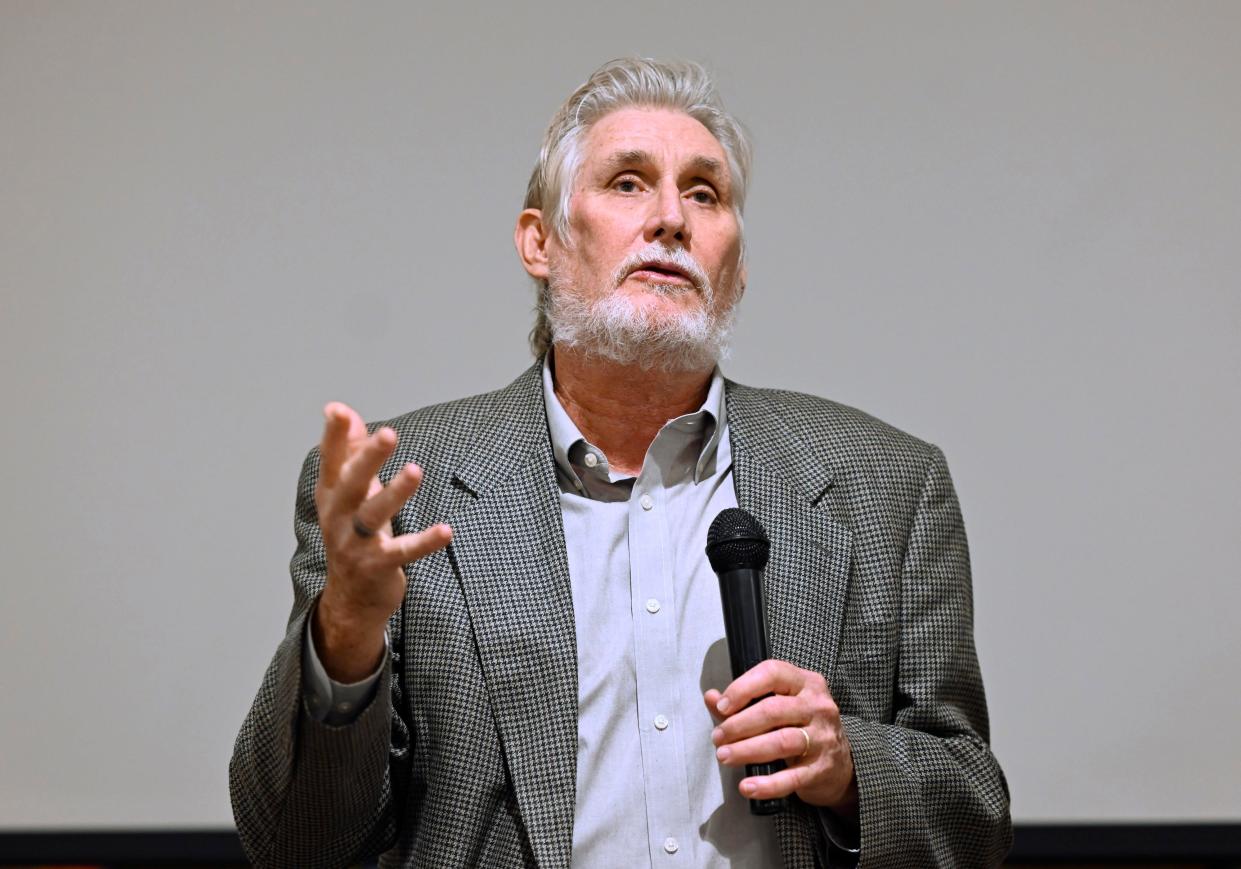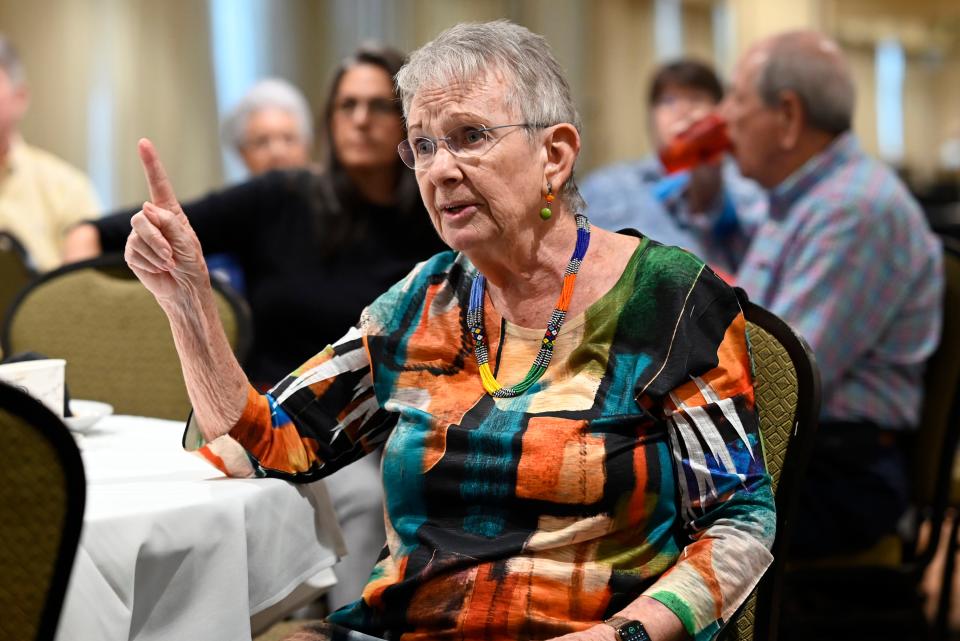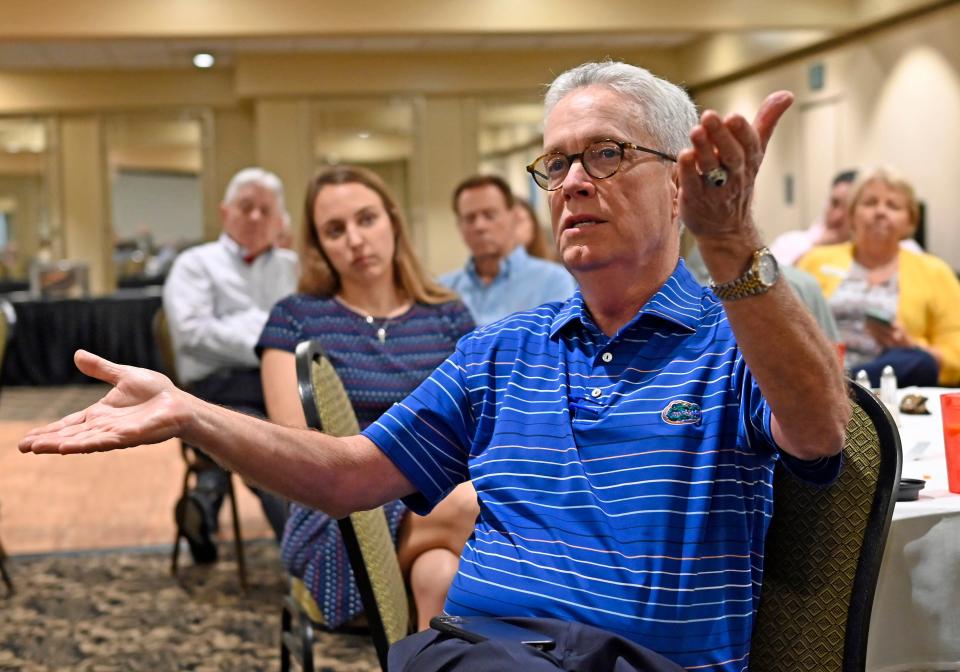Thaxton: Progress made on Sarasota County's affordable housing; more steps needed

VENICE – Jon Thaxton, senior vice president for community leadership for the Gulf Coast Community Foundation, told members of the South County Tiger Bay Club that local efforts to foster the creation of affordable housing has yielded positive results.
But Thaxton also noted that, while those efforts help put hundreds of housing units in the pipeline, the service needs of new market-rate developments create demand by the thousands.
A 2023 update of a report on Asset Limited, Income Constrained, Employed families in the region that was released by the United Way of the Suncoast showed that through 2021, the number of total households living paycheck to paycheck grew to 615,627 in the five-county region. The area includes Sarasota, Manatee, DeSoto, Pinellas and Hillsborough counties.
Early on in his dialogue with moderator Laura Benson, Thaxton stressed that he preferred the term “affordable housing,” to the recently coined, “attainable housing.”
“I do like affordable rather than attainable because we learned in several real estate crashes that simply attaining housing is not the end goal,” Thaxton said. “The end goal is to have affordable housing that is both attainable and sustainable.”
For most of his presentation Thaxton summarized the recommendations made by Sarasota County’s Affordable Housing Advisory Committee – of which he is a member – followed by a question and answer session.
He last addressed affordable housing with South County Tiger Bay in 2022, as part of a panel that included North Port Neighborhood Services Director Alaina Ray and Sarasota County Commissioner Ron Cutsinger.
Back then, the big news was the county’s decision to dedicate $25 million in American Rescue Plan funds to affordable housing with nonprofit developers, a decision that should result in the creation of more than 700 homes.
Thaxton highlighted that decision and a plan to allocate $40 million of the $201.5 million post-Hurricane Ian federal block grant program known as Resilient SRQ for affordable multifamily housing as positive steps.
He also praised the county for identifying public land for affordable multifamily communities as outlined by the state in the Live Local Act as a key step to create those communities.
“What’s happening here is you’re taking the cost of land out of the equation to build the affordable housing,” Thaxton said. “Sometimes that’s all the developer needs to make a profit on building the units – that with expedited permitting, maybe a few extra units, but the public lands, too, has been very successful in the community of Sarasota.”
Market-rate housing growth spurs affordable housing demand
Thaxton got his start as a real estate agent in the mid-'70s working with first-time home buyers who were able to build wealth through homeownership. He said that path doesn’t exist for many workers in Sarasota County who live on minimum wages or wages well below the area median income – the type of service jobs needed to provide amenities to market-rate homeowners and renters.
“These concierge lifestyles, these maintenance-free living, these restaurants, these golf courses … all of these new market-rate homes are creating a demand for a service workforce that makes nowhere near the amount to live in Sarasota,” Thaxon said. “Every time we approve one of these new market-rate developments, we are not looking at the affordable housing demand we’re creating.”
Thaxton said that while Sarasota County has embraced several “supply side” solutions to provide affordable housing, it has yet to look at the “demand side” solution to fill that need – mandatory inclusionary zoning – which is permitted under state law.
A developer can either build the affordable housing on site, or pay a fee for it to be built elsewhere.
Short of that, the Affordable Housing Advisory Committee had a variety of other suggestions – more carrot than stick – to prompt developers to fill the need for affordable units.
Many require increased density, such as a density bonus program if a developer commits to build at least 12% of the base density as affordable housing, allowing vacant commercial properties to be redeveloped with an affordable housing component without costly and lengthy zoning hurdles – or “by right” – as well as making it easier to do so near existing employment centers.
Thaxton also pointed to the importance of creating a local source for affordable housing funding – something fellow advisory board member Drayton Saunders, president of Michael Saunders & Co., suggested could be accomplished by setting aside a percentage of the yearly property tax increase in an affordable housing trust fund.
Thaxton called that “simple, elegant and brilliant.”
“You keep it here locally and you let our local officials decide how that money is going to create affordable housing,” he added.
‘Dignity, class and character’
He noted that for all properties he’s worked on with Gulf Coast, the “sense of dignity has been a driving force alongside affordability.”
“We need to build a rental market that has both attainable, sustainable and housing with dignity,” Thaxton said. “Dignity, class and character – there's no reason for us to expect someone in Sarasota to be living in substandard conditions – even if it is a rental property.”
He pointed to Parkside Cottages, a development owned by Family Promise of South Sarasota County that gives previously homeless families an opportunity to improve their lives, as an encouraging example.
Thaxton later said that he is working with the nonprofit on several projects in Nokomis, North Port and Venice.
Marty Dover, a longtime Venice resident on a fixed income who has had to move each time her rent increased, reminded Thaxton that the housing pinch has affected seniors too.

“Next time I have to move, I might have to leave Venice,” said Dover, who said she is spending half of her income on rent. “Where will I go?
“We need workforce housing but do not forget the old ladies on a fixed income who want to stay where they've been living 28 years and can’t afford it anymore.”
Thaxton agreed.
“You are right, it is not just the workforce – it’s not just the teachers, the firemen, the policemen we hear all about, it is the seniors that are on fixed incomes … They may have a COLA keeping pace with inflation and the cost of whatever, but they’re not keeping pace with the cost of housing, not even close.”
Shortening the commute?
Attorney Jeff Boone pointed to the large swath of land between the Myakka River and DeSoto County – perceived as a bedroom community for many Sarasota County service workers – that has been earmarked for preservation and asked whether that could be used for affordable housing.
Lands bought specifically for preservation – such as Sarasota County’s Environmentally Sensitive Land Preservation Program – cannot be used but he referenced land held by private owners who sold off their development rights.
“I really think it’s something that should be discussed,” Boone said, then added: “Why couldn’t some of that land – we’re talking about out State Road 72 – why couldn’t some of the land be used for real, honest-to-goodness … forever affordable housing.”
Thaxton said he agreed with his fellow Venice High School alumni in principle but not application, but later added that it would be something to consider as a “last resort.”
He said Sarasota County missed the boat by not creating a transferable development rights program, through which developers could buy those rights, with the funds going to affordable housing.

He also said merely shorting the commute for those workers would not alleviate congestion.
“If you locate affordable housing correctly in the workplace you will decrease traffic,” Thaxton said then added congestion is in the last four or five miles of a commute, not the first four or five miles.
Related: It's time for a balanced approach to affordable housing in Sarasota
Thaxton linked that to the concept of housing with dignity.
“These people deserve an affordable dignified place to live, where they don’t have to give up two-and-a-half hours of their day from their children, in order to drive to get to where they work,” Thaxton said. “When people ask me why it matters to them, we need to look behind the scenes and look at the workforce that so diligently provides for these services that we all enjoy.”
This article originally appeared on Sarasota Herald-Tribune: Thaxton: More steps needed to meet Sarasota affordable housing demand

